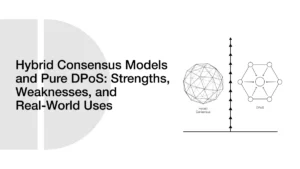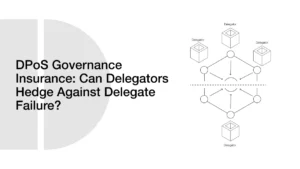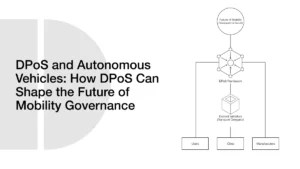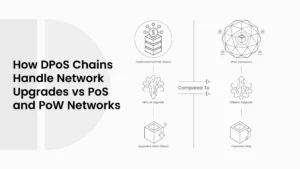Can DPoS Be Hacked? Your Ultimate Guide to Risks and Security
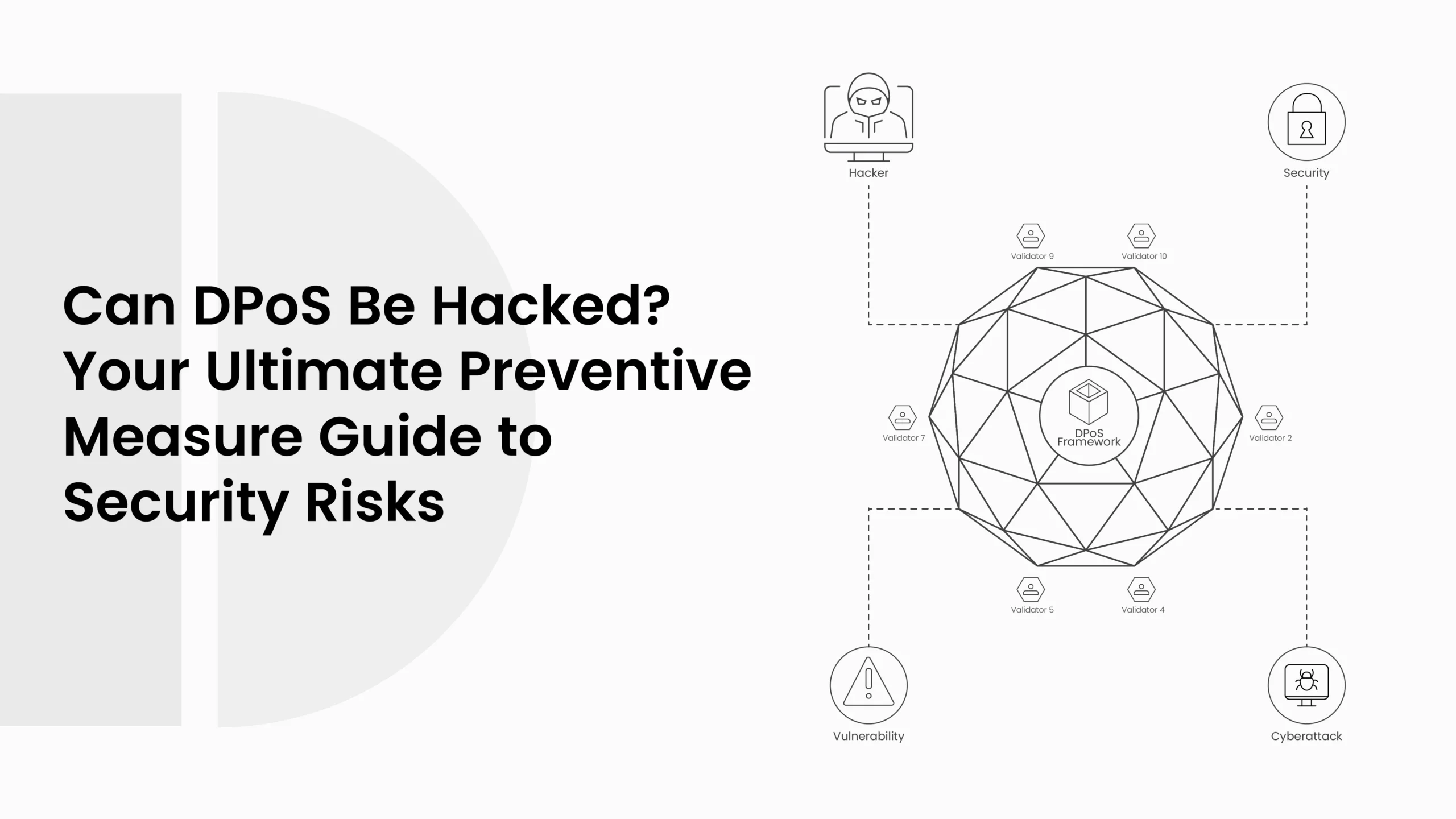
Delegated Proof of Stake (DPoS) has emerged as one of the most popular blockchain consensus mechanisms due to its efficiency, scalability, and low energy consumption. Platforms like EOS, TRON, and Steem use DPoS because it can process thousands of transactions each second while also letting the community join in decision-making through voting. Still, like any digital system, DPoS also has its own security problems.
- Delegate Collusion and Takeover Attacks
- Infrastructure Attacks and DDoS Risks
- Social Engineering and Governance Exploits
- Governance Risks in DPoS
- Vote Buying and Centralisation
- Proxy Voting Abuse
- Possible Solutions
- Smart Contract Vulnerabilities on DPoS Chains
- Example of an EOS Vulnerability
- Financial and Network Threats
- Strengthening DPoS: Countermeasures and Future Outlook
- Conclusion
- Frequently Asked Questions About DPoS Security Risks
- What makes DPoS different from other consensus models?
- What are the biggest security risks in DPoS?
- How does vote buying affect DPoS?
- Can smart contracts put DPoS networks at risk?
- Glossary of Key Terms
In DPoS, token holders vote for a small group of block producers. These producers are the ones who check transactions and keep the blockchain alive. This setup makes the system much faster than Proof of Work blockchains, with less delay and way more transactions per second. But the same things that make DPoS fast and attractive, like having only a few validators and quick agreement, can also make it open to new risks.
Some of the problems that may occur include delegates colluding with unfairness, individuals attempting to purchase or counterfeit votes, or even assaults on the servers and nodes on which the system operates. As blockchain continues to gain popularity in most sectors, it is worth considering such risks. It should not only be the concern of developers and node operators but also of students, investors, and crypto fans who would like to have a safe and long-lasting system.
ALSO READ: The Economics of DPoS: How Token Inflation and Distribution Shape Blockchain Governance
Delegate Collusion and Takeover Attacks
One of the most commonly cited risks in DPoS systems is the potential for delegate collusion. Since DPoS blockchains only use a small set of block producers, sometimes 21 or even fewer, it opens the door for them to work together in ways that hurt the system. If most of these producers join forces, they could block certain transactions, change parts of the chain’s history, or even push through bad smart contracts.
This isn’t just some theory. Back in 2020, people in the EOS community started worrying because a few block producers were said to be trading votes and helping each other stay in power. Some producers were even accused of giving rewards to voters or making secret deals. It wasn’t a hack in the normal sense, but it did make many users lose trust in the fairness of the voting system.
The voting system itself makes this problem bigger. In PoW or PoS, you usually need lots of machines or money to become a validator. But in DPoS, delegates are chosen by votes from token holders. If a few big wallets hold most of the tokens, they can control who wins again and again. That often turns into a small circle of the same delegates keeping their spots, while smaller or new participants hardly ever get a chance.
Infrastructure Attacks and DDoS Risks
DPoS blockchains save energy and can handle more transactions, but because they only depend on a small number of block producers, they are easier to hit with infrastructure attacks like DDoS. Since most DPoS chains run with fewer than 30 main producers, their servers or IPs can become easy targets for attackers.
A DDoS attack floods a producer’s server with fake traffic until it slows down or crashes. With a DPoS system, a small number of producers going offline can cause the network to come to a crawl. In a more severe scenario, it may lead to forks or even temporarily halt the chain, particularly when such nodes were due to generate a block then.
This problem has already shown up in the past. For example, the Lisk blockchain in 2018 admitted that its small validator set made DDoS a real danger. To deal with it, they told producers to hide IPs, use VPNs, and spread servers across different cloud providers. Some newer DPoS chains also added backup or standby delegates that can step in if one main producer gets attacked.
The best way to fight these issues is to have backup systems and servers in different locations. Strong firewalls, load balancers, and failover setups can help too. Some blockchains now run health checks that quickly rotate producers when one goes down. Still, until DPoS systems get more advanced at handling these threats, staying watchful is the only way to keep the network safe.
ALSO READ: What are Block Producers in DPoS? An Ultimate Guide to their Roles and Incentives
Social Engineering and Governance Exploits
Governance Risks in DPoS
DPoS blockchains are said to be democratic, as token holders can also vote for block producers. This system is supposed to establish trust and make things open. However, it is at the same time that it may be abused, particularly in networks where not all people vote or users do not perfectly understand the functioning of DPoS.
Vote Buying and Centralisation
One of the biggest problems is vote buying. Some producers try to win support by giving rewards, perks, or even tokens in return for votes. While this might look harmless, in the long run, it can make a small group of producers too powerful. If these producers work together, they could even push through changes that don’t help the community or block certain transactions. That’s a direct threat to fairness and decentralisation.
Proxy Voting Abuse
Another risk comes from proxy voting. DPoS networks often allow users to hand over their vote to another wallet, known as a proxy. It’s meant to make governance quicker, but it can also cause too much power to be held by a few proxies. If those proxies are supported by large token holders or hidden groups, the whole governance system can tilt in their favour.
Possible Solutions
To fight these governance risks, different platforms are trying out new methods. Some use weighted voting models, others test identity checks for candidates, and some even promote more open campaigning rules. But technology alone is not enough. Education is also key. When token holders understand how the DPoS system really works, they are less likely to be tricked by fake promises, deceptive campaigns, or short-term incentives.
Smart Contract Vulnerabilities on DPoS Chains
A majority of DPoS blockchains currently have smart contracts, allowing developers to design dApps or automation without an intermediary. This provides much power and flexibility to the ecosystem. But with that power, there is a different type of risk. A smart contract can be exploited in case it contains a bug or is poorly written. It implies that even a strong, secure blockchain can be stolen or even terminated, and its services.
Example of an EOS Vulnerability
A good example of this happened with EOS, one of the largest DPoS platforms. Hackers once used a weakness in the way smart contracts worked to inject malicious code. This didn’t break the EOS chain itself, but it crashed block producer nodes and disrupted normal operations. It was a reminder that even if the chain is safe, the apps running on top of it can still cause big problems.
Financial and Network Threats
Many smart contracts on DPoS chains manage sensitive things like token inflation and distribution. If these contracts are hacked, it can lead to heavy financial losses or unfair manipulation of markets. On top of that, if a contract is written without proper limits, it might ignore gas or execution rules. That can overload the network, slow down block production, or even cause missed blocks.
ALSO READ: How to Choose the Right Delegate or Validator in a DPoS System
Strengthening DPoS: Countermeasures and Future Outlook
Even with some security problems, DPoS blockchains are still very popular. They are fast, don’t use much energy, and the way they agree on blocks is very efficient. Instead of giving up on DPoS, many projects try to make it stronger by fixing the weak points, improving governance, and learning from old issues.
One way to make DPoS safer is to add more block producers. Some chains don’t just rely on 21 or 27 producers; they also use backup nodes, rotating schedules, or make a bigger pool of producers who can take part. This makes collusion harder and gives the network more strength against attacks.
Another method is using slashing and reward systems. Slashing means cutting rewards or even the stake if a producer acts badly or goes offline. At the same time, fair rewards keep voters interested and active. Platforms like Lisk and Solar also created public dashboards where anyone can see producer stats like uptime, missed blocks, and voter records. This kind of openness helps people trust the system and pushes producers to behave better.
Lastly, the future of DPoS security will rely on game theory, zero-knowledge proofs, and automated governance audits. As research in this space grows, developers and voters alike will gain stronger tools to identify vulnerabilities early. With the right countermeasures, DPoS can become a model of secure, scalable blockchain governance.
ALSO READ: Staking in DPoS Networks: Know All About Risks, Rewards, and ROI
Conclusion
Delegated Proof of Stake (DPoS) gives many strong benefits in blockchain. It makes blocks faster, uses less energy, and lets the community take part in governance. For many people, it feels like a better choice compared to systems like Proof of Work that need heavy electricity. But of course, no system is perfect. DPoS also comes with its own risks, like collusion between delegates, unfair vote trading, weak smart contracts, and even attacks on the producer’s servers.
What really makes a DPoS chain stronger is not only the design of the system but also how open and active the community stays. Security in blockchain is never done once and for all; it’s something that must keep changing. Developers, token holders, and producers have to work together all the time to find problems, stop abuse, and update governance models as new threats appear.
With good steps like tracking proxy votes, stronger server protection, slashing bad actors, and auditing smart contracts, DPoS networks can stay safe and grow even when attackers try to cause trouble. As the ecosystem matures, DPoS remains a powerful tool for scalable, democratic consensus, so long as its weak spots are acknowledged, studied, and continuously improved.
Frequently Asked Questions About DPoS Security Risks
What makes DPoS different from other consensus models?
Delegated Proof of Stake (DPoS) is different because token holders vote for a limited number of block producers instead of relying on miners or random validators. This makes it faster and more energy-efficient but also more dependent on community trust.
What are the biggest security risks in DPoS?
The main risks include delegate collusion, vote manipulation, proxy voting abuse, infrastructure attacks like DDoS, and smart contract bugs. These issues can weaken decentralization and network security if not managed properly.
How does vote buying affect DPoS?
Vote buying happens when block producers give rewards or perks in exchange for votes. While it may seem harmless, it often concentrates power in a few producers, reducing fairness and decentralization in the system.
Can smart contracts put DPoS networks at risk?
Yes. Even if the chain itself is secure, poorly written smart contracts can be exploited to steal funds, cause crashes, or overload the system. EOS, for example, faced issues where malicious contracts disrupted block producer nodes.
Glossary of Key Terms
- DPoS (Delegated Proof of Stake): A consensus system where token holders elect a set number of block producers to validate transactions.
- Block Producer / Delegate: An elected participant responsible for creating blocks, checking transactions, and maintaining the chain.
- Vote Buying: When producers offer rewards or benefits in exchange for votes, often leading to centralization.
- Proxy Voting: A system where token holders assign their vote to another wallet or representative.
- Slashing: A penalty mechanism where bad producers lose rewards or stake for misbehavior.
- DDoS (Distributed Denial of Service): An attack that floods a server with traffic to overwhelm and disable it.
- Smart Contract Exploit: A vulnerability in code that hackers can use to steal assets or disrupt the blockchain.

